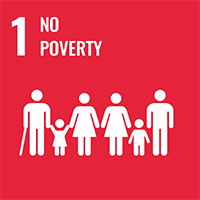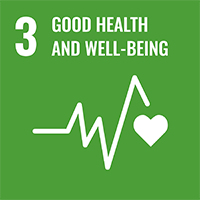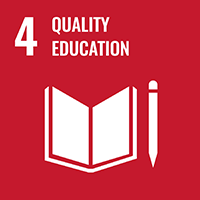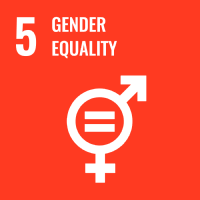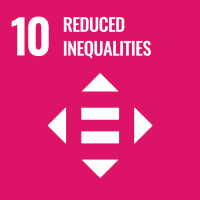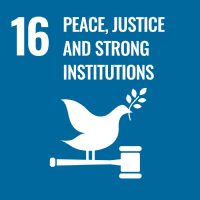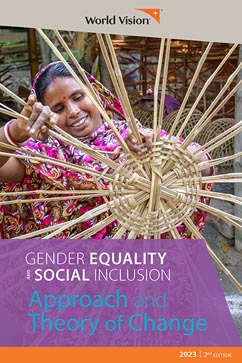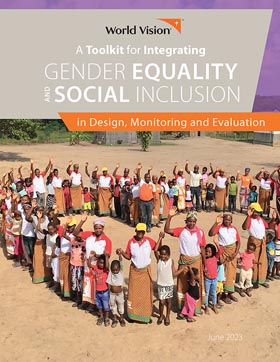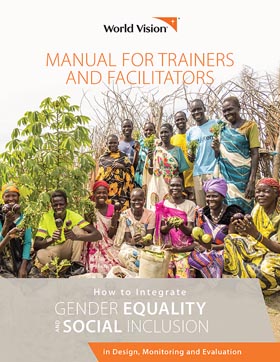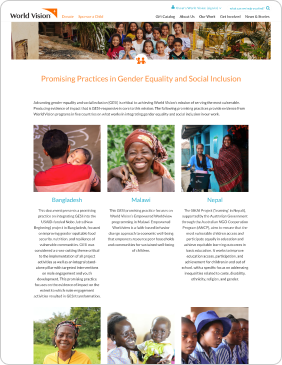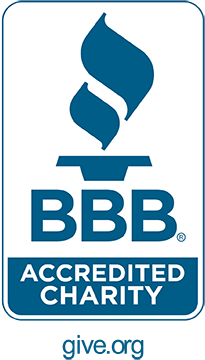
Gender Equality and Social Inclusion
GESI is an essential process of change that addresses the root causes of inequality and exclusion for the most vulnerable children and adults throughout the world.

Gender Equality and Social Inclusion
GESI is an essential process of change that addresses the root causes of inequality and exclusion for the most vulnerable children and adults throughout the world.
Highlights
71% of men
In our Nobo Jatra project in Bangladesh, 71% of men are now assisting with domestic and caregiving tasks, compared to 38.2% at baseline.
52% increase
In our Zimbabwe project, the percentage of couples making joint decisions around nutrition rose from 30% to 82% in one year.
15,069 people with disabilities
In our program in South Sudan, 15,069 people with disabilities accessed health facilities in 2020, compared to 1,619 in 2019 — an increase of more than 900%.
World Vision is dedicated to working with vulnerable children and adults, their families, and their communities worldwide to reach their full potential by tackling the root causes of poverty and injustice. Advancing gender equality and social inclusion (GESI) is critical to achieving this mission. That’s why we have prioritized GESI as a strategic imperative in all our work across sectors, including health; food security and livelihoods; child protection; education; and water, sanitation, and hygiene.
We address GESI by working to ensure that the most vulnerable have equal and inclusive access, decision-making opportunities, and participation in society. We work to transform systems, both formal and informal, so that vulnerable children and adults enjoy an enabling environment and realize their full potential. We advance the well-being of people living in fragile contexts and urban areas, as well as those impacted by climate-related crises or catastrophic events, including pandemics. We focus on intersectionality by tackling overlapping vulnerabilities such as gender, disability, Indigenous status, religion, age, sex, economic status, health, nationality, and migrant/refugee status.
United Nations Sustainable Development Goal (SDG) 1, 3, 4, 5, 10 & 16
GESI Resources
World Vision’s work is guided by our GESI approach and theory of change. We have also developed a toolkit on integrating GESI in design, monitoring, and evaluation (DME) with sector-specific reference guides. Through a series of promising practices, we have documented evidence of impact of GESI integration in our programs.
The GESI Approach and Theory of Change.
This document presents World Vision’s GESI approach
and theory of change. GESI is integral to achieving World Vision’s “Our Promise” global strategy and child well-being objectives. As a child-focused, Christian, and community-based…
A Toolkit for Integrating GESI in Design, Monitoring, and Evaluation (DME).
This toolkit is designed to provide guidance and tools to support staff in integrating GESI perspectives in all stages of project Design, Monitoring and Evaluation (DME). The goal is to …
A Training Manual for Integrating GESI in Design, Monitoring, and Evaluation (DME).
This training manual is designed to provide guidance and tools to support staff in integrating GESI perspectives in all stages of project Design, Monitoring and Evaluation (DME). The goal is to …
GESI Promising Practices
The following promising practices provide evidence from World Vision programs on what works in integrating gender equality and social inclusion. Producing evidence of impact that is GESI-responsive is core to our mission…
GESI Audit Guide
This document provides practical guidance, steps, and tools to help develop and implement a GESI Audit, based on lessons learned by World Vision.
Gender Equality and Social Inclusion Subsectors

Gender equality is the state or condition that affords women, girls, men, and boys, equal enjoyment of human rights, socially valued goods, opportunities, and resources. It includes expanding freedoms and voices, improving power dynamics and relations, transforming gender roles, and enhancing overall quality of life so that males and females achieve their full potential.
According to InterAction, “Research shows that societies with greater gender equality experience faster economic growth, better outcomes for children, and more representative government institutions.” Unfortunately, one indication of widespread gender inequality is that one in three women globally report having experienced physical and/or sexual violence at some point in their lifetime. Gender-based violence and discrimination costs everyone. We address gender inequality by working with entire communities — women, girls, men, and boys — to transform discriminatory practices together. We also work with faith leaders around the world to acknowledge and act upon gender injustices in their communities.
Gender Equality FAQS:
Why is gender equality so foundational to development work?
At World Vision, we believe that promoting gender equality is central to effective and sustainable development. In its extreme forms, gender inequality can manifest as gender-based violence through crimes such as rape, honor killings, and harmful cultural practices such as child marriage and female genital mutilation (FGM). But gender inequality often takes subtler and more pervasive forms, such as the restriction of behaviors and opinions and control over choices and resources.
What is World Vision's approach to gender equality work?
We design programs that address gender inequality and prevent gender-based violence in the communities where we work. We address gender inequality by working with men, women, girls, and boys equally to transform harmful social and gender norms and confront stereotypes that perpetuate and reinforce discriminatory beliefs and practices. We believe in the importance of working with faith leaders as catalysts in changing harmful attitudes and behaviors in their communities. By engaging faith leaders in respectful dialogue to analyze sacred texts and debate traditional beliefs, we affirm cultural aspects that positively impact communities and challenge those that entrench power imbalances between men and women. By educating faith leaders on gender issues and emphasizing the unique giftedness and important role of women in families and communities, we help to ensure that women are empowered to influence their own futures, girls have improved opportunities to attend school, and churches become centers of justice against gender inequities in their communities.
What are some examples of World Vision's efforts and results?
- Nicaragua: World Vision’s Prevent Domestic Violence, Promote Gender Equality, and Transform Communities project in the Caribbean Coast enhances gender-based violence (GBV) prevention and response in Nicaragua by strengthening the technical skills of community service providers, improving shelters, and challenging harmful gender norms that perpetuate the acceptability of violence. This 2.5-year State Department-funded project uses a survivor-centered approach to improve survivors’ access to quality services, safety, well-being, and economic empowerment.
- Bangladesh and Kenya: Through the Promoting a Unified Response to and Prevention of Sexual and Gender-based Violence (SGBV) in Emergencies project, World Vision is working to prevent, mitigate, and respond to SGBV during the COVID-19 pandemic. The project aims to strengthen our global capacity to integrate and promote GESI within our emergency SGBV programming across various contexts, such as refugee camps like Cox’s Bazar in Bangladesh and in urban and peri-urban settings in Kenya.
- South Sudan: The Prioritizing GESI Across Health Interventions in Western Equatoria project focuses on ensuring equitable access to quality health services for all and strengthening health systems in South Sudan. The project uses a multisectoral approach to address the social determinants of health. World Vision works to create a conducive environment for mainstreaming GESI in the health system; to build the capacity of health providers and ensure equal access to and use of health services; and to improve health-seeking behaviors of vulnerable populations, encouraging them to exercise their rights to obtain health services. The project serves women, girls, survivors of sexual and gender-based violence, people with disabilities, people living with mental health concerns and challenges, and other vulnerable groups.

Gender-based violence (GBV) spans cultures and social groups, religions, and education levels. It has devastating consequences on the lives of women, children, and their families. It is also deeply rooted in gender inequalities, in cultural norms that assert men’s superiority and power over women, and in rigid norms about men’s and women’s roles.
Gender-Based Violence FAQS:
How does World Vision engage males – youth, men, fathers – in the effort to eliminate all forms of GBV?
- In Timor-Leste, World Vision works with young fathers to promote positive masculinity and caregiving as part of addressing gender-based violence. We promote healthy, non-violent, gender-equitable attitudes and relationships, particularly between intimate partners, between youth and their parents, and among youth. World Vision works with parents to encourage positive relationships with their children; connects survivors of GBV to the most appropriate care; and enhances GBV prevention and response at the local level.
- In India, World Vision works with fathers to address the issues of child marriage, child abuse, and gender-based violence in families. A More Equal Future is a curriculum used by community facilitators to engage with fathers, daughters, and entire families to critically examine and change norms that support child marriage.
- In Sri Lanka, we work with fathers to prevent violence against women and children and to promote the involvement of men as partners and caregivers. Community facilitators create safe and constructive spaces for men to reflect on and redefine what it means to be men and fathers in their communities. A qualitative assessment of this project showed strong indicators of success, including a decline in domestic violence, increased school enrollment, reduced alcohol consumption, and an increase in shared caregiving.

Women’s empowerment is crucial for achieving the United Nations Sustainable Development Goals (SDGs), ending world hunger and poverty, and building a better world for children. Globally, women are more likely to live in poverty than men. This is due, in part, to gender-specific constraints to economic empowerment — such as lack of access to financial services, lack of agency and control over resources, inequitable opportunities, and discriminatory cultural norms — as well as legal and regulatory systems.
Women’s Economic Empowerment FAQS:
How does World Vision support women's economic empowerment?
World Vision takes a two-part approach to women’s economic empowerment: we work to improve the skills, resources, power, and agency of women, while simultaneously addressing inequitable social and cultural norms, laws, and institutions to promote an enabling environment where both women and men can thrive. Using our core models of Savings for Transformation, Ultra-Poor Graduation, Building Secure Livelihoods, and microfinance, we focus on the following areas:, we focus on the following areas:
- Financial inclusion
- Entrepreneurship
- Inclusive market systems
- Male engagement for women’s empowerment
What are some examples of World Vision's impact and efforts?
- Bangladesh: The USAID-funded Nobo Jatra project works to improve gender equitable food security, nutrition, and resilience among vulnerable people in southwest Bangladesh. In this area, Nobo Jatra facilitates training for women in literacy, numeracy, and technical skills. The project pursues production activities such as raising livestock, homestead production, and aquaculture, where female lead farmers are selected and trained to establish demonstration plots and sell produce in local markets. Lead farmers are linked to markets to access inputs and sell their products through linkages with collection centers. Over 8,600 women have been trained on Alternative Income Generating Activity (AlGA) trades such as hand embroidery, turkey rearing, tailoring, basketry, and dry fish processing. The women earn steady incomes — for each piece of hand embroidery completed, women earn an average of $75, a sizable amount in this area.
- Zimbabwe: Enhancing Nutrition, Stepping up Resilience and Enterprise (ENSURE), a USAID-funded program, empowered poor, rural households in the Manicaland and Masvingo provinces to become more food secure. Through this program, World Vision worked with both men and women to address the underlying causes of women’s continued marginalization. In 2017, farmers (almost 80% female) used information provided by market facilitators to substantially increase net revenue for goats, poultry, groundnuts, and sorghum value chains. At the household level, net revenue increased by 200% for goats, 95% for poultry, 23% for groundnuts, and 500% for sorghum. Additionally, after three years, men showed increases of 54% in fetching water, 64% in fetching firewood, and 56% in helping with vegetable gardening. Women increased time spent in rest and income generating activities. In 2017, the value of income from savings groups and farmers (majority female) increased from $3,255,149 at baseline to $5,380,560. Couples’ joint decision-making rose from 30% to 82% from year three to four.
- Global: Transforming Household Resilience in Vulnerable Environments (THRIVE) is a five-year privately funded project targeting 486,530 smallholder farmers and reaching 2,611,742 household members in Honduras, Malawi, Rwanda, Tanzania, and Zambia. Drawing on our Empowered Worldview curriculum, the project focuses on increasing household income through interventions in end-to-end systems of farming, natural resource management, and disaster risk reduction. In Tanzania, families are seeing an increase in their productive assets, enabling them to grow their own food and/or pursue an income generating activity that provides for family needs.

Within World Vision’s social inclusion programming, we seek to address inequality and/or exclusion of vulnerable populations by improving terms of participation in society and enhancing opportunities, access to resources, voices, and respect for human rights. Vulnerability factors vary according to context and may include ethnicity, religion, disability, age, education, employment, wealth, nationality, migration status, HIV and AIDS diagnosis, and other stigmatized health conditions. We seek to promote empowerment and advance peaceful and inclusive societies and institutions.
Social Inclusion FAQS:
How does World Vision implement social inclusion programming?
We are guided by our toolkit on integrating GESI in design, monitoring, and evaluation, which takes us through the following processes:
- We always apply a GESI lens. World Vision sees GESI as a lens and is essential to addressing the root causes of inequality and exclusion for the most vulnerable children and adults in the countries where we work. For that reason, we incorporate inclusion, increased agency, and empowerment of excluded individuals and groups into our program objectives and theory of change.
- Within any sector program, we use a GESI analysis to understand which individuals or groups are the most vulnerable: those who are excluded from services, assets, and decision-making; who lack access to economic, social, and political processes; and who are most impacted by inequalities in formal and informal systems at individual, household, community, and societal levels. We seek to understand how intersecting social identities impact vulnerability and to address barriers that may prevent certain groups from participating in or benefiting from programs.
- We develop holistic sector programs that enhance the well-being of excluded populations and improve their access to assets and services. We create opportunities for excluded groups to participate in social, economic, and political activities and in decision-making, and we empower them to use these opportunities to have greater agency over key decisions that impact their well-being. We use our social accountability tool, Citizen Voice and Action, to empower excluded groups to challenge the inequalities in formal and informal systems.
- We implement our programs in a socially inclusive way. We work with our staff to identify unconscious biases that may limit their ability to include all groups in our programs. We budget for an inclusion fund. We monitor and evaluate our programs using carefully selected, disaggregated data to make sure that excluded individuals and groups are both participating in and benefiting from our work. We also track progress in addressing gender and social norms that underlie exclusion. We include excluded groups in key informant interviews and focus groups during program evaluations.

We are guided by our toolkit on integrating GESI in design, monitoring, and evaluation, which takes us through the following processes:
- We always apply a GESI lens. World Vision sees GESI as a lens and is essential to addressing the root causes of inequality and exclusion for the most vulnerable children and adults in the countries where we work. For that reason, we incorporate inclusion, increased agency, and empowerment of excluded individuals and groups into our program objectives and theory of change.
- Within any sector program, we use a GESI analysis to understand which individuals or groups are the most vulnerable: those who are excluded from services, assets, and decision-making; who lack access to economic, social, and political processes; and who are most impacted by inequalities in formal and informal systems at individual, household, community, and societal levels. We seek to understand how intersecting social identities impact vulnerability and to address barriers that may prevent certain groups from participating in or benefiting from programs.
- We develop holistic sector programs that enhance the well-being of excluded populations and improve their access to assets and services. We create opportunities for excluded groups to participate in social, economic, and political activities and in decision-making, and we empower them to use these opportunities to have greater agency over key decisions that impact their well-being. We use the Citizen Voice and Action (CVA) social accountability tool to empower excluded groups to challenge the inequalities in formal and informal systems.
- We implement our programs in a socially inclusive way. We work with our staff to identify unconscious biases that may limit their ability to include all groups in our programs. We budget for an inclusion fund. We monitor and evaluate our programs using carefully selected, disaggregated data to make sure that excluded individuals and groups are both participating in and benefiting from our work. We also track progress in addressing gender and social norms that underlie exclusion. We include excluded groups in key informant interviews and focus groups during program evaluations.
Disability Inclusion FAQS:
What is disability inclusion and why focus on it?
Disability inclusion is one aspect of social inclusion, the process of transforming social relations and structures so that people and groups who are traditionally marginalized have increased opportunities, power, rights, access to resources, and agency. This enables them to shape cultural, economic, and political systems, and participate in all aspects of social life. People can be marginalized due to many aspects of their identity, and women with disabilities often experience dual discrimination based on their gender and disability.
People with disabilities experience exclusion not only because of physical, cognitive, or sensory impairments, but also because of societal barriers that limit meaningful participation. Though people with disabilities often need services such as rehabilitation or assistive technology, these services alone won’t address the root causes of exclusion. Only breaking down barriers in a community can do that.
What barriers do persons with disabilities face, and what is World Vision’s approach in breaking them down?
People with disabilities face many barriers in society, such as inaccessible environments (lack of wheelchair ramps or accessible latrines), harmful stereotypes or stigma around disability, and institutional structures that are not accessible (laws and policies that do not consider the unique needs and contributions of people with disabilities). Women and girls with disabilities are further marginalized by rigid gender roles and lack of decision-making power in their households and communities.
How does World Vision integrate disability inclusion in its programming?
To implement programs effectively, World Vision trains staff to understand disability issues and address any biases they may have toward people with disabilities. World Vision also provides training on how to support the consideration of disability issues throughout its project cycles. We use the CVA social accountability tool to support the inclusion of people with disabilities in social, political, and decision-making processes.
Advocacy
In Colombia, the USAID-funded Training, Economic Empowerment, Assistive Technology, and Medical/Physical Rehabilitation Services (TEAM) project engaged 2,749 people with disabilities in CVA processes. Each of the 18 groups produced an action framework. They prioritized the most frequently violated rights for people with disabilities, including delays in receiving care, the shortage of available appointments with health specialists, limited accessibility in parks and other community settings, and limited opportunities for employment and income generation. Local authorities listened to CVA groups and expressed verbal commitments to addressing the issues raised. Groups then monitored progress toward these commitments, resulting in 175 actions being directly attributed to CVA processes. Perhaps the greatest impact of the CVA groups was the strengthening of relationships around disability, resulting in greater solidarity, understanding, and support.
“The TEAM project and CVA helped a lot of people to understand, and to energize and gather people through the local action boards. I think it was a success.” — Jorge, project participant, Barranquilla
Education
Primary and pre-primary education: World Vision has integrated inclusive education into our two main program models, Learning Roots (ages 3 to 5) and Unlock Literacy (grades 1 to 3). Program delivery is universal in design, allowing children to receive information in different ways and to express their learning in different ways. Community-based reading camps supplement learning for children who need additional assistance to enhance their literacy. We also focus on increasing acceptance and creating a school environment that includes children with disabilities.
Malawi, our inclusive education program nearly doubled the number of children with disabilities attending school within a three-year period. We worked with 80 community leaders, including five chiefs, to shift negative norms around disability. As a result, 21% of adults interviewed said they had a child with a disability in their family, whereas previously, the disabilities were hidden.
Development of inclusive, accessible learning materials: All Children Reading: A Grand Challenge for Development (ACR GCD) — a partnership of USAID, World Vision, and the Australian government — advances EdTech innovation and research to improve reading outcomes for marginalized children in low-resource contexts. Through global grant and prize competitions, ACR GCD identifies and brings to scale the most promising EdTech solutions for addressing barriers that prevent children with disabilities from learning to read. ACR GCD has also funded extensive research, including on the adaptation of the Early Grade Reading Assessment, to ensure children with disabilities are included in measurements of literacy acquisition and skills. Read more about All Children Reading’s innovations for children with disabilities.
Youth
In Guatemala, World Vision implements the USAID-funded Puentes Project to improve the quality of life for youth ages 15 to 24 in the country’s Western Highlands. This project focuses on particularly marginalized youth, including youth with disabilities. Vulnerable youth receive information and develop knowledge and skills to gain employment and economic opportunities, as well as education, health services, and social services. They also learn to engage the local government, the private sector, and service providers to improve access to quality services and generate new employment and economic opportunities. Puentes Project partners with a local federation of organizations of people with disabilities (OPD) to identify and recruit participants with disabilities and to ensure positive representation of youth with disabilities in the training materials and radio broadcasts. By partnering with an OPD and making activities and content accessible and communications inclusive, Puentes Project seeks to be transformational in increasing access to services, decision-making, equitable systems, and meaningful participation of people with disabilities.
Ethiopia, the Engaged, Educated, Empowered Ethiopian Youth (E4Y) project, funded by the United States Department of Labor, addressed exploitative child labor by promoting education and vocational training opportunities and enhancing livelihood opportunities and access to social protection programs for youth and their households. E4Y worked with male and female youth from 7,500 households in Ethiopia, emphasizing the inclusion of youth with disabilities while exploring opportunities for disability inclusion in the Ethiopian workplace. The project also focused on education by challenging teachers’ perceptions of gender norms and disability, aiming to improve teachers’ ability to meet the specific needs of children with disabilities. Youth with disabilities were provided with the necessary adaptive devices, such as eyeglasses, crutches, and wheelchairs, to access education and training.
Water, sanitation, and hygiene
Because World Vision often begins its work in communities with water, sanitation, and hygiene (WASH) projects, we recognize that these projects must be disability inclusive to:
- Achieve the basic human right to water and sanitation
- Reach the most vulnerable
- Set the tone for inclusion in other community-based projects to increase access
World Vision has worked with organizations of people with disabilities and nongovernmental organizations to develop activities that ensure that WASH programs are inclusive and that accessible infrastructure and adaptive devices are available. Please see our WASH page for more information on our WASH work.
Health
World Vision supports the inclusion of children and adults with disabilities in the provision of health services, including in accessible forms and locations. World Vision has implemented programs that provide wheelchairs and other specialized rehabilitation support. World Vision uses its extensive health partnerships in communities to identify people with disabilities, refers them to specialized disability service providers, and then follows up at the community level to make sure the services have improved their health and function.
With funding from USAID, World Vision led the Accelerating Core Competencies for Effective Wheelchair Service and Support (ACCESS) project in India, Nicaragua, Romania, El Salvador, and Kenya. ACCESS strengthened the wheelchair sector and ensured that people with mobility limitations could access appropriate wheelchairs through qualified service providers and enjoy full participation in their communities. The project provided wheelchair service to 7,319 clients and trained over 900 rehabilitation professionals using World Health Organization courses for wheelchair service. At the end of the project, 93% of wheelchair clients surveyed indicated that they experienced increased community participation, and 43 wheelchair service centers showed increased capacity for service.
This link between service provision and community development was the innovation of the ACCESS program, which is now being scaled up across World Vision’s wheelchair programs through our holistic approach.
The USAID-funded Training, Economic Empowerment, Assistive Technology, and Medical/Physical Rehabilitation Services project enabled 3,670 people with disabilities in Colombia to become more independent and integrated into society. The project used mobile clinics coupled with telemedicine to make assistive technology (AT) services more accessible to rural populations. World Vision worked with community-based partners and health systems to identify people for screening and ensure they had the correct documentation to access health insurance. An initial visit by a multidisciplinary team included a screening and assessment. A second visit provided AT devices. Follow-up was then provided through telemedicine that connected community-based primary health service providers with specialists.
Economic empowerment
People with disabilities and their families are more likely to be living in poverty because of lower levels of education, the cost of accessing health and rehabilitation services, and productivity lost when care is required for the person with a disability. When World Vision identifies a person with a disability, we ensure that they can access any financial assistance provided by the government and nongovernmental organization support programs.
The USAID-funded Training, Economic Empowerment, Assistive Technology, and Medical/Physical Rehabilitation Services project worked with people with disabilities and their families in Colombia to increase their economic well-being. The project organized them into productive groups and equipped them with the necessary skills and resources, like tools, to increase their income by an average of 28%. Participation in these groups also provided individuals living with disabilities with a critical source of emotional and informational support.
Learn more about some of World Vision’s promising practices by reviewing the Children with Disability: Promising Practices report.

According to the World Bank, there are between 370 and 500 million Indigenous peoples worldwide, in over 90 countries. Although they make up just 5% of the global population, they account for about 15% of the extreme poor. Indigenous peoples’ life expectancy is up to 20 years lower than the life expectancy of non-Indigenous peoples worldwide. Indigenous peoples play a vital role in guiding development on climate-related crises, community health issues, and gender and social norms. Unfortunately, most Indigenous peoples face discrimination and systemic exclusion that limit their access to education, healthcare, and other services and opportunities.
Indigenous Peoples FAQS:
How does World Vision work with Indigenous peoples?
World Vision works in many majority Indigenous communities around the world. We are guided by our GESI approach to empower these groups and give them agency to transform the formal and informal structures and systems that exclude them. We seek to build resilience at individual, family, community, and societal levels so that people can thrive, withstand crises, adopt positive response mechanisms, and transform structures to diminish vulnerabilities — all of which contribute to the Sustainable Development Goals adopted by the United Nations. We focus on Indigenous populations to reduce their vulnerabilities to climate-related crises, social exclusion, inequality, violence, lack of opportunities, food insecurity, and a lack of political agency. Efforts to empower Indigenous women are particularly important at the individual, family, community, and societal levels.
What are some examples of World Vision’s work with Indigenous groups?
Community Roots is a USAID-funded project in Guatemala that supports efforts by the Guatemalan government, civil society, private sector, and community actors to holistically address the underlying causes of violence and migration in Guatemala. It primarily targets children, youth, and young adults ages 8 to 24, and women in disadvantaged communities (such as Indigenous populations) that are characterized by high levels of crime, irregular migration, or both. The project also supports violence prevention projects for Indigenous youth, such as vocational training, job skills development, and targeted social services and entrepreneurship in coordination with municipal and local authorities.
USAID-funded Puentes Project for positive youth development seeks to improve the quality of life of young people ages 15 to 24. The project addresses the major drivers of undocumented foreign migration through access to employment, education, development, and improvement of well-being and quality of life. World Vision implements the project in partnership with a consortium of organizations with expertise in alternative education, workforce readiness, entrepreneurship, STEAM education, vocational training, agriculture, and Indigenous culture. Through the Puentes Project, Indigenous youth are empowered to take control of their future with information, knowledge, and skills to access opportunities and improve their income, and they are connected to support services that are critical to their overall well-being.
“The combination of ancestral knowledge with new technology strengthens youth identity and highlights its importance for issues such as community coexistence, productivity, and advocacy for a better future,” says Julio Dominguez, who oversees work on gender, disability, and Indigenous groups within the Puentes Project. He says that it is important to help people find tools that allow them to protect their cultural heritage and access training consistent with the needs of the current market.
World Vision’s Prevent Domestic Violence, Promote Gender Equality, and Transform Communities project in the Caribbean Coast in Nicaragua focused on gender-based violence prevention and response. It strengthened the technical skills of community service providers, improved shelters, and challenged harmful gender norms that perpetuate the acceptability of violence. This 2.5-year State Department-funded project used a survivor-centered approach to improve survivors’ access to quality services, safety and well-being, and economic empowerment, including among Indigenous populations.

World Vision is committed to strengthening the capacity of our staff in integrating GESI. We have a duty to capture and communicate the impact of our work to advance the well-being of the most vulnerable children, their families, and their communities.
GESI training
We provide training for staff, including introductory modules and more technical GESI integration training. The training on integrating GESI in design, monitoring, and evaluation (DME), which is based on our GESI DME toolkit, enables us to enhance the transformational nature of our programming and to capture and communicate the impact of our work. It helps us to apply our systematic GESI approach and theory of change in all our work, and to create a pool of World Vision staff who have skills on GESI integration and act as its champions.
GESI Tools
World Vision develops various GESI tools and resources for staff, including a DME toolkit and sector-specific GESI integration reference guides to direct and support the operationalization of the GESI approach and theory of change in each area of our work. Additionally, we develop manuals for trainers and facilitators to provide guidance in the design, organization, and implementation of GESI-related trainings.
GESI promising practices
World Vision documents GESI promising practices — methods and approaches in all our programming that have made a demonstrable impact on GESI transformation in the areas where we work. This evidence helps World Vision to demonstrate the effectiveness of strategies we use to address the accelerators of extreme vulnerability and serve the most vulnerable children and adults. Our documentation also allows us to increase the effectiveness of our programs by singling out methods, approaches, or activities that have been tested and found to be successful. These promising practices then become practical examples in our trainings on how to integrate a GESI lens so that the most vulnerable children and adults can achieve agency, empowerment, and transformation.
GESI assessments
World Vision conducts GESI assessments to identify different needs, priorities, and vulnerabilities of women, children, people with disabilities, Indigenous peoples, and other vulnerable groups. These assessments enable us to understand how gender roles and responsibilities, access, and decision-making power vary among different groups, as well as help us to identify the root causes (social relations, institutions, and structures) upholding harmful gender and social norms and practices. GESI assessments can also uncover potential positive and negative consequences of program activities for the people we serve. This helps us to come up with interventions to meet different needs and to mitigate any unexpected negative consequences of programming, so that we can better address the root causes of exclusion and inequality.
Gender Equality and Social Inclusion Stories
The incorporation of GESI promising practices in our Nobo Jatra project encourages male engagement and transforms families in Bangladesh.
Watch Now
The USAID-funded Women Empowered for Leadership and Development project in Sierra Leone empowers women and advances their socioeconomic and political leadership in their communities.
Watch Now
GESI promising practices are integrated into WASH UP! Girl Talk programming in Zimbabwe, which promotes healthy WASH behaviors.
Watch Now

